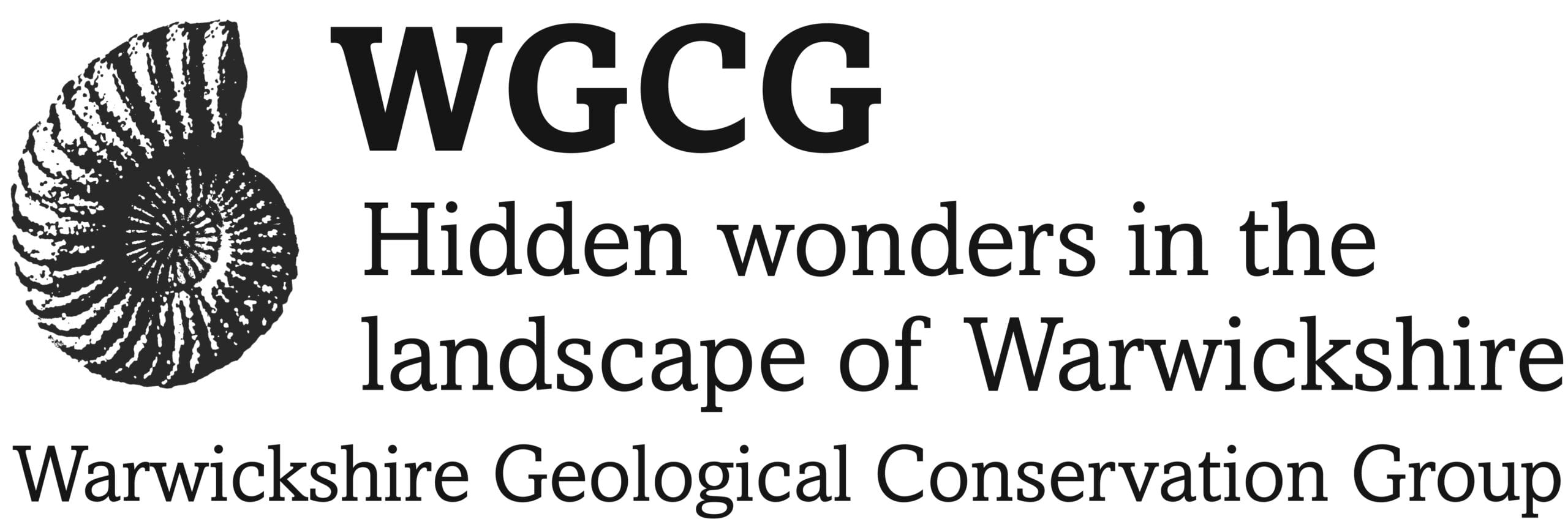Report by Ray Pratt
Bradgate Park is located in Charnwood Forest, Leicestershire, an inlier of Pre-Cambrian and early Palaeozoic rocks. The exposures visited on this trip were all Pre-Cambrian, mostly laid down in a deep water setting by turbidity currents. Many of the sediments were originally of volcanic origin that were reworked, often initially disturbed by tectonic earth movement. At that time the area was located in the high southern latitudes. Today Charnwood Forest is a dome structure with the lithologies younging away from the centre.

Most of the area is covered by vegetated Triassic deposits. Crags of the highly folded basement rocks poke through in a NW-SE trend.
Stop 1
Located at the public toilets close to the park entrance. These were constructed of Peldar Dacite Breccia, part of the Whitwick Volcanic Complex / Bardon Volcanic Complex thought to have developed sub-sea. They are of felsic composition.

Peldar Dacite:
Large light-coloured phenocrysts of feldspar in a fine-grained matrix. Large clasts of previous lava flow give a brecciated (agglomerate) appearance.
Stop 2
Beacon Hill Formation, Old John Member, was the first outcrop visited. Located just beside Old John Tower, the beds were seen to dip steeply to the south whereas the cleavage, developed through compression, dipped even more steeply to the north. Small scale sedimentary structures were also seen in these outcrops. These thinly fining up beds were deposited by Turbidity currents

Sediment, likely derived from the erosion of volcanic rocks on land, which were carried by turbidity currents into a calm marine environment. This process led to the formation of fining-upward sand and mudrock deposits, observed in both the Old John Member and the Outwoods Breccia Member.
Stop 3
A little to the south we crossed onto outcrops of the younger Outwood Breccia Member. Here dramatic slumping and inclusions of blocks were seen as a consequence of mass debris flow, probably initiated by earthquakes.

Following lunch on the lawn of the Visitor Centre, we headed to the next exposure located close to Bradgate House, home of the deposed Tudor Queen of England, Lady Jane Grey.
Stop 4
Just to the south of Bradgate House, was a large quartzite exposure cut by a less resistant intermediate igneous dyke. Two lateral faults were identified running approximately east-west, parallel to the dyke suggesting a relationship between the structures and the igneous intrusion. The quartzite displayed ripple marks on its bedding planes and occasional cross bedding in section. On the top bedding plane, we found trace fossils of Arenicolites.

Stop 5:
Just to the west of Bradgate House the South Charnwood Diorites are exposed. Prior to the end of the Precambrian, crustal tension stretched the Charnwood area NE-SW, allowing magmas of both intermediate and felsic composition to rise into created spaces running NW SE in the Charnian Supergroup. These form a number of igneous intrusions of widely ranging size and extent, including the south and north Charnwood Diorites.

The South Charnwood Diorite is c. 200m in total thickness. It is massive, mottled pink and green granophyric groundmass of quartz and alkali feldspar, with phenocrysts of red stained plagioclase feldspar and green chlorite (derived mostly from hornblende). It shows an intrusive relationship with the host rocks in the form of a Sill (or dyke like) body. It is estimated to be a minimum of 10 km long.
Stop 6:
Bradgatia Crag, exposes the uppermost division of the Maplewell Group, the Bradgate Fm. This is represented by the Hallgate Member. It is another thick deposit, over 600m, dominantly of fine to coarse grained tuffs which were laid down, then re-worked by marine currents and deposited again by turbidity currents. This environment was colonised by the enigmatic (?) sea pen Charnia Masonii. The rocks are blue-grey, fine to coarse grained tuffs. Flat laminated to thinly-bedded with fining upwards textures. Uppermost beds contain Charnia masonii. At this location Bradgatia linfordensis has been recognised.

The actual exposure containing the fossil has been cordoned off to prevent damage. In this picture some group members were examining nearby accessible bedding planes away from the cordoned off exposure in an attempt to find evidence of other surfaces that may contain fossils, in particular Bradgatia linfordensis.
Photo by Gareth Jenkins
Stop 7:
At the final exposure of the day, we examined the stratigraphic contact between Outwoods Breccia Member and the Bradgate Formation.
Here we observed the apprently conformable stratigraphic boundary between the Beacon Hill Formation and the younger Bradgate Formation. The Outwood Breccia Member contains a lot less angular clasts and slumps, than the same beds seen at stop 3.

The interbedded nature of the argillaceous and sandy sediments of the Bradgate Formation has resulted in cleavage refraction through the more competent sandy beds. In an argillaceous unit the cleavage will develop at 90 degrees to the maximum stress. In the more competent interbedded strata the cleavage shows an oblique refraction from this stress direction, (see figure below).


The 6km circular route shown in the figure below is overlain onto Nick’s Geological Map of the area which gives an idea of the variety of the geology seen during this field excursion.

